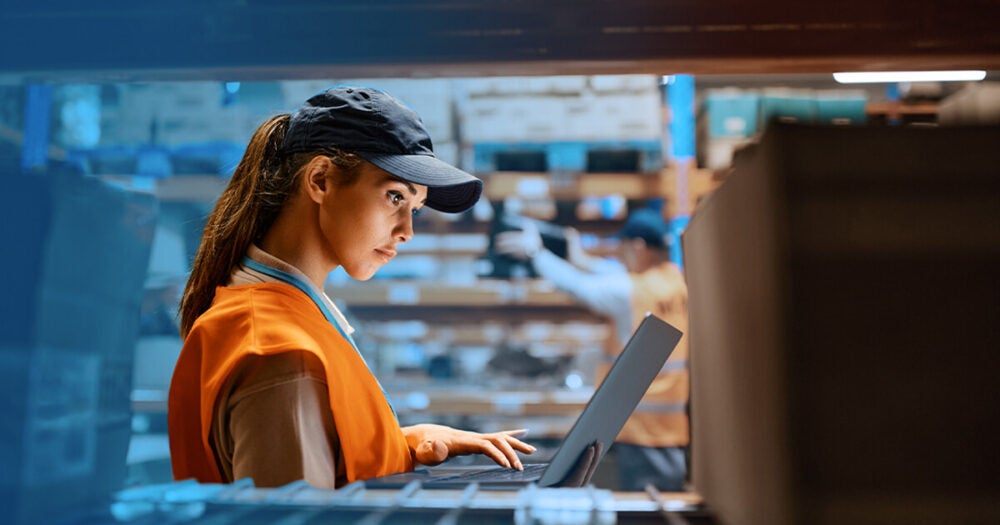As a shipper, you are probably always on the lookout for ways to save money and increase operational efficiencies to protect your bottom line. One solution that some companies struggle with is reverse logistics. This is the process of regaining value on returned products or its parts and materials by reintroducing them into the marketplace. You can also sell qualifying recyclable parts and lower your environmental footprint.
It's no wonder many companies have begun to appreciate the underlying value of their products and are more willing to spend the time and money to invest in the reverse logistics process. In fact, they may have no choice. The National Federation of Retailers recently released a report that said, "retailers expect 17.9% of merchandise sold during the 2022 holiday season to be returned." With numbers like this, perhaps reverse logistics management should be seen both as an opportunity and necessity.
GlobalTranz, an industry-leading third-party (3PL) logistics company with a full suite of shipping solutions, is here to help. Below, we outline the different types of reverse logistics solutions and describe in detail how a company can gain value throughout the entire lifecycle of their products.
6 Reverse Logistics Management Strategies to Incorporate
Reverse logistics is considered one of the biggest challenges facing shippers. The idea of transporting and processing returned products can be difficult for many companies. However, the benefits of an efficient program include better customer outcomes, reduction in storage/distribution costs, saving money and environmental considerations. A 3PL can help you incorporate the following reverse logistics supply chain management strategies.
Returns
The customer usually initiates this step when they no longer want a product, or they found it to be unsatisfactory. The retailer or business can resell the products to another customer in marketplace at regular price or as a clearance item. Additionally, if the products are in good condition, they have the option to sell them to inventory liquidators or overstock buyers to sell at a lower price.
- Pro tip: "Return" has a different meaning for rental and leasing companies that loan out vehicles, machinery and equipment on a regular rotation. When the products are returned, the company should inspect them to ensure they're in safe and working order before leasing them to another party. At some point these products, which go through a standard reverse process multiple times, will join other products in the reverse cycle as their quality and usefulness degenerates.
Recall
In recall situations, the company initiates the reverse logistics process. Consumer protection laws require manufacturers, suppliers, distributors, importers and retailers to report products with safety defects or concerns to the Consumer Product Safety Commission. If a recall is in order, the company will create an action plan to address the concerns, communicate the information to consumers and monitor the recall process. A product recall can be costly, but a company's reputation can be saved through a thorough, professional and ethical corrective plan.
Repair and refurbish
These reverse logistics solutions may start with either the customer or company. For example, a customer may send defective equipment or electronic devices to the manufacturer for repair. Or a company may publicize offers for consumers to turn in their current device or electronic goods and upgrade them for the next best model. In both cases, the company then refurbishes the older product for resale.
Remanufacture and reuse
When a product is returned to the manufacturer, it can be disassembled, and its working parts reused in other products. This process may require more strategy since the manufacturer will need to inspect the product and assess if it can be salvaged and reused. Reusing a working component can save the company money from having to purchase new ones.
Recycle
Products that are of no value to the manufacturer can be sold to other businesses for recycling and reuse. This limits the product's environmental footprint and allows you to extend the lifecycle of a product that would otherwise be reduced to garbage.
Proper disposal
This is the final step of a product and its parts when the previous categories aren't applicable or an option. In this phase, the product owner responsibly disposes of the product to create the least impact or risk to the environment. Chemicals and pharmaceuticals fall into this category, as well as those products that are of no further value and have completely reached the end of their lifecycle.
Want to learn more about reverse logistics management? GlobalTranz can help.
GlobalTranz is an industry-leading 3PL, providing best-in-class supply chain optimization and managed transportation solutions to shippers of all sizes across the nation. Our team of logistics experts will help analyze your supply chain management processes, identifying opportunities to save money and maximize operational efficiencies. That includes incorporating reverse logistics solutions into your shipping strategy.
Are you ready to speak to one of our experts? Reach out for a consultation today!

